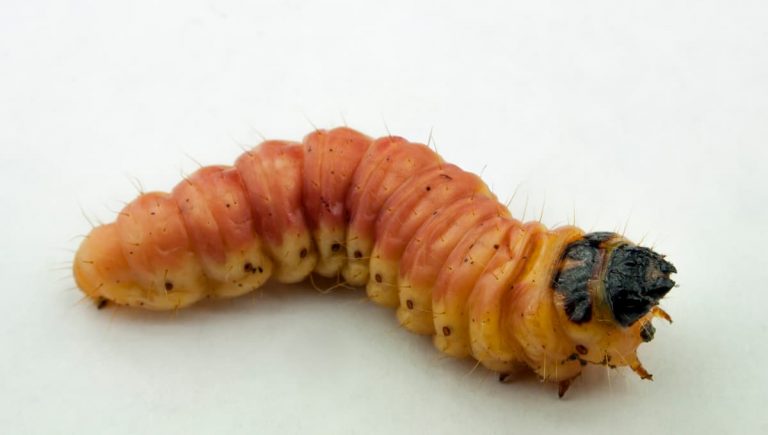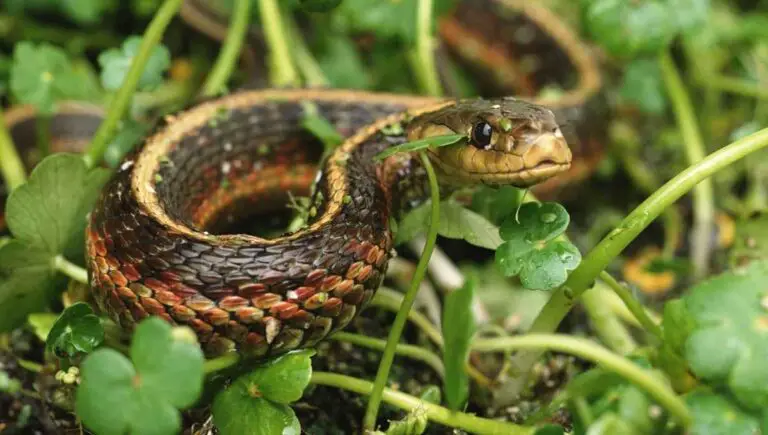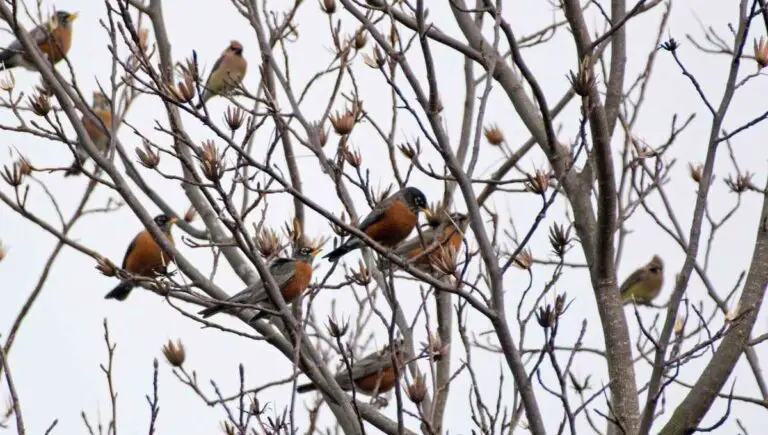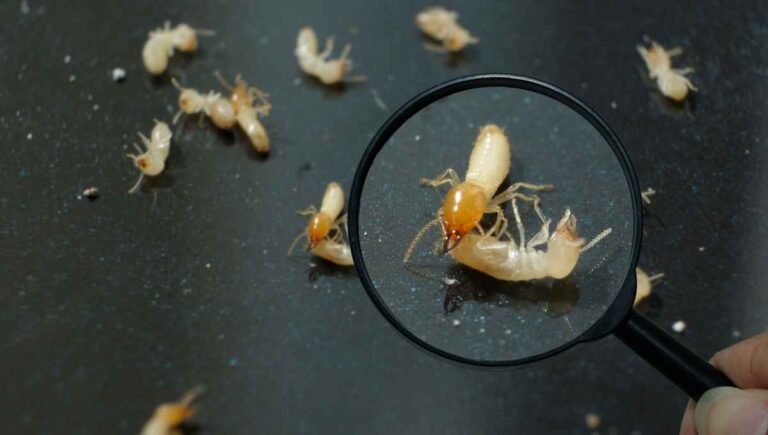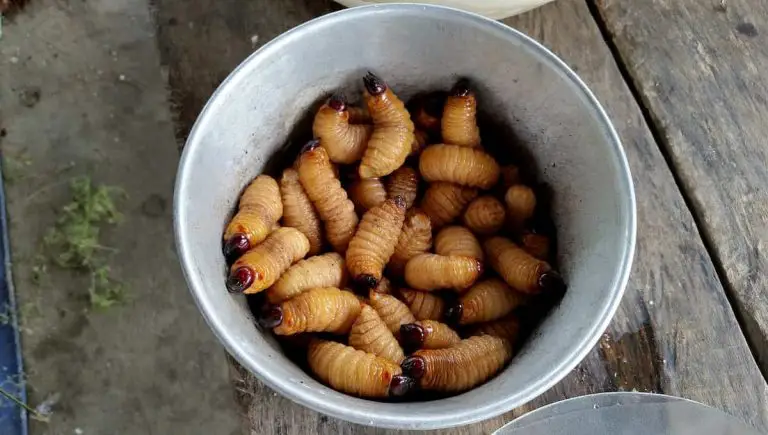How to Tell What Kind of Animal Is In My Attic

“How to tell what kind of animal is in my attic?”. If you’re asking this question, you’re probably already sharing space with wildlife. Sounds coming from your upstairs areas are telltale signs that you’ve got uninvited squatters living in your home with you, with various species emitting different noises.
You can tell what kind of animal is in your attic is by paying attention to various signs and sounds they make. Depending on the time of day you hear the sounds, this will let you know whether the animal is nocturnal or not. Pay attention to how loud the sounds are, which can give you an idea of the size of the animal(s). Look for signs of animal droppings, nests, and the destruction of your home’s insulation to narrow down what the animal may be.
Unfortunately, various types of pests are attracted by the warm refuge of your attic, where some seek out warmth or a safe space to raise their babies.
Removing animals from your home isn’t easy, and for the most part, is a task designated for the professionals. At the same time, laying lethal traps and using poison is deemed cruel, inhumane, and in some states outlawed where these unwanted animals are protected species that must be handled with care.
What Are the Most Common Animals Found in the Attic?
Rats, mice, raccoons, bats, opossums, and squirrels are more than likely to take up residence in your attic. However, there are several other types of species that may be attracted to the living there too.
If you suspect that these or other pests have invaded your attic, you must have them removed because they can cause significant damage to your home if the infestation is left unchecked.
How you remove them depends on the type and size of the animals that you’re dealing with. However, it’s important to remember that many of these carry diseases and parasites. Therefore, it’s wise to stay away from specific animals that are known to bite when threatened, such as raccoons and squirrels.
How Can Animals Enter My Attic?
Most of the animals we’ve mentioned are adept climbers who can reach your attic from great heights. Smaller mammals, such as rats and mice, can pretty much go anywhere they want by squeezing into the smallest openings. Serpents too, like climbing snakes, can also slither into tiny openings, but can only climb up rough surfaces due to their limbless bodies.
Squirrels, like rodents, can also climb through small gaps. However, they tend to chew at these openings to make them bigger to allow for easy entry.
Larger animals, on the other hand, such as raccoons, do need larger openings. However, these pests rip things apart to gain entry. If you have a raccoon invasion, you’ll know about it.
How Do I Know What Animal is in My Attic?
Do you ever hear lay awake at night, listening to the unceasing sounds of scratching, nibbling, thumping, and other noises in the attic at night? If the above scenario is an everyday frustration or an ordeal for you, then you’re more than likely dealing with a scourge of unwanted visitors.
The first step in your investigation is to narrow down your search by the sounds you hear. For example, if you’re identifying nocturnal animal sounds, then it’s less than likely that a family of squirrels is living in your ceiling because these animals are diurnal, meaning they’re active during the day and early evenings.
At the same time, some pests make light scratching sounds while the movements of others are heavy and unmissable thumping sounds.
Common Sounds for Which to Look Out, According to Different Animals
Rodents
How do you know if you have rodents in the attic? Animals in the attic scratching at night could be rats or mice.
Members of the rodent family, namely rats and mice, are commonly found living in attics.
What do rats in the attic sound like? Rats and mice make similar sounds, so if you hear scratching, gnawing, and pitter-patter noises, then you probably have rodents living in your ceilings.
One way of differentiating between the two is that rats in the attic at night tend to gnaw loudly. This is necessary to know if you plan to remove these pests by baiting them as rats are larger and require larger traps to catch.
As rodents are nocturnal, you’ll hear them moving around through your walls and ceilings at night. They won’t make verbal sounds unless they’re stuck, in which case you may hear high-pitched squeaks.
Raccoons
Do you hear a weird knocking sound in the attic? You may have raccoons on the premises.
Raccoons are considered nuisance animals in America, known to make a terrible ruckus. These animals make a wide range of noises, ranging from loud and heavy thumping to the sounds of things being ripped apart.
Raccoons and their babies are also the only types of house pests that are verbal. Calls, cries, snarls, and chitters are raccoons in the attic sounds made at night when they wake up. You’ll hear them when they leave to forage for food, usually rifling through your trash bins, and upon their return.
It’s said that baby raccoons make cries similar to human babies, so if you hear these and you don’t have children, it’s highly likely that your home has been invaded by wildlife.
Not only are their movements non-subtle, but the signs they leave behind when they vacate an area are evident, including fecal matter and destruction to property, which we will look at later.
Bats
Bats are nocturnal creatures that prefer living in darkness, which makes your attic especially attractive to them.
On their own, bats are quiet animals, but they can cause a racket when in colonies, which is when you’ll start suspecting that you’re not alone in your home.
Interestingly, the first signs of bats in an attic are the rustling of their wings. While they do making chirping sounds, we can’t hear it because the pitch is higher than the human ear can detect.
You’ll hear bats leave for the night at dusk and return at dawn. So if you want to investigate where exactly they roost or how they enter the space, watch for movement around these times.
Opossums (Possums)
The nighttime sounds of opossums are similar to raccoons because these nocturnal creatures are loud, especially when they’re not alone. You’ll hear them during mating season, if there are mother and baby opossums in your attic, or when they’re under threat.
Scampering and clicking are noises that tell you opossums have invaded your home.
Chipmunks
You won’t commonly find chipmunks in attics, and if you do, it’s because they’ve burrowed through your home’s foundation by accident.
Much like the activities of squirrels, which we’ll look at later, chipmunks move around during the day, climbing things and storing food in high spaces.
If you’re wondering “what is in my attic that scratches?” there’s a small chance it could be chipmunks. Chipmunks make loud scratching noises when they forage and climb on structures, which is sometimes accompanied by chirping.
How do you get rid of chipmunks in the attic? As we’ve already mentioned, the attic isn’t a living space of choice for these critters, because they prefer the coolness burrowing underground, and may soon clear off on their own in due course.
Birds
Birds aren’t usually regarded as pests, but the truth of the matter is that birds can make a massive mess on roofs while building nests and caring for their young.
You’ll know you have a flock on your hands by the sounds of flapping and tweeting.
Birds also make sounds when they’ve entered your home and become trapped. They’ll attempt to become unstuck by clawing against walls and flapping their wings.
Snakes
Knowing that snakes are living with you may be a nightmarish scenario, but it’s a reality you’ll have to accept, especially if you reside in an area populated by climbing snakes. Many people don’t realize or know that snakes can climb climb walls and enter your home.
As the name suggests, these snakes are excellent climbers that can enter your home through the smallest openings. Typically, it’s difficult to hard to hear snakes move, especially through walls, but some individuals can hear slithering noises if they listen carefully.
Squirrels
How do you know if you have squirrels in your attic? For the most part, the critters that live in your attic or ceiling are nocturnal. Therefore you’ll only hear them at night.
So if you hear a scurry of activity during the day, your attic has probably been invaded by squirrels. They move around in the early mornings when they leave your home to find food and return in the evenings to settle in for the night. If there are baby squirrels around, the mother is likely to return periodically to feed them.
On their own, mother squirrels are relatively quiet squatters but add a few babies to the mix, and you won’t have a moment’s peace during the day.
On top of being active during the day, squirrels can be heard quickly scurrying around. If you hear rolling, it’s not your imagination playing tricks on you, but the sounds of these pests moving their food supplies, i.e., their nuts around the attic.
What Are Other Signs That I’ve Got Pests in My Attic?
If there’s something in your attic, but you can’t identify the sounds, there are other signs that you can watch out for.
As we’ve mentioned, many of these animals are nocturnal. Therefore, a good time of day to have a look around your attic and search for signs of the culprit is during the day. However, be careful when crawling around dark and small spaces. If you come across an animal, there’s a good chance that it’ll feel cornered, act defensively, and cause you harm.
Pests, such as raccoons and squirrels, can have rabies, which is an illness that can spread if you get bitten.
Visible evidence that points to animals living with you include droppings, nests, and the destruction of your home’s insulation.
Rat Infestations
If by chance, you don’t hear scratching sounds in the ceiling at night that attest to the presence of rodents, you’ll know they’ve been around by a large amount of fecal matter found in your attic. The dropping look like small grains of rice that appear in heaps.
Rats are also chewers, so if you see small bite marks on cables and surrounding areas, you might be facing a rodent infestation.
If the droppings and chew marks aren’t a dead giveaway for the presence of rats, brown smudges on the walls will. These smears are grease marks from rat fur.
Racoon Infestations
Because they’re large pests, raccoons make a lot of noise and leave behind a mess. Their droppings are as large as small dogs, and because they prefer to do their business in the same space, their latrines are typically found in one area.
Berries make up a significant part of a raccoon’s diet, so you’ll notice on closer inspection of their fecal matter, fragments of berries.
Not only are they large animals, but raccoons are highly destructive creatures who tear everything in their pathway to shreds. You won’t find it hard to identify the openings that raccoons use to enter your homes. They take advantage of poorly structured areas. Holes and tears are sure signs that raccoons are or have been around.
Squirrel Infestations
If you can’t discern between squirrels and rats by sound, you’ll find that it’s also challenging by the evidence both species leave behind.
Squirrel droppings are similar to rodent droppings, which look like grains of rice, plus they’re also chewers. However, these pests are highly destructive chewers, who will even nibble around the exterior of small holes to allow for easier access.
Therefore, distinctive signs of squirrels in attics are bite marks near the entryways and exits. If you spot these, it’s highly likely that squirrels have sought shelter in your attic.
Squirrels give birth twice a year, so you may also locate nesting debris around these times.
Bat Infestations
Next to hearing the flutter of wings when you’re in bed at night, people can spot bats as they leave their dwellings in search of food at dusk.
At the same time, bats make their presence known by the powerful odor of their feces, which is also harmful to humans. While bat droppings or guano makes for an effective fertilizer, it contains the fungus Histoplasma capsulatum. If breathed in, you’re at risk of contracting a severe respiratory disease called Histoplasmosis that can result in death if it’s left untreated.
Snake Infestations
As you may know, snakes shed their skin when they grow and to remove parasites, so you may find old skin when clearing out your attic. These signs may be visible throughout the year, but more so in winter when serpents are at their most active.
Opossum Infestations
Opossum droppings are similar to those of raccoons in size, but theirs are more pointed at the ends. At the same time, these droppings are found everywhere and not in one preferred space.
Opossums also damage the wiring and insulation in your home, which is also something you should look out for.
Unfortunately, due to these pathways that they create, opossums lose their young who fall through the cracks, becoming trapped within the walls. If you don’t hear or see opossums, you’ll be alerted to a dead one by the horrible smell.
How Do I Get Rid of an Animal in My Attic?
We’ve provided you with information on how to identify the type of animal living in your attic; now we’ll give various ways to have them removed, without putting yourself or them in danger.
Keep Your Distance And Make The Environment Unfavorable
If you happen to encounter these animals wandering around your home, you must remain calm and keep your distance. Many of these species, especially raccoons, are large and can harm you if you threaten them, and a raccoon bite or scratch should be taken seriously because they are carriers of diseases.
The best course of action in these instances is to allow these animals to leave on their own and not to interfere. You can encourage their exits by opening doors, windows, leaving on lights, and turning on the radio. These pests, who prefer the dark and quiet, probably won’t stick around for long.
Trapping
If your attic’s tenants are more long-term, there are ways to remove them permanently using humane methods, such as trapping animals in attics. Trapping is one way of ensuring critter removal from the attic.
Know The Rules And Regulations
If appropriately trapped, you can remove the animal unharmed. However, you must be aware of the ordinances protecting these species in your county. For example, you can’t disturb bats during the mating season.
At the same time, there may be specific catch and release policies in place that won’t allow you to release wildlife in public parks or on government land. When in doubt, call the professionals to deal with the situation instead.
Look For Babies
If there are babies around, wait a few months until they have adequately grown and can be trapped separately from their mothers.
If you don’t have time and the animals aren’t protected species, you can remove the babies separate from its mother, but be sure to reunite the family upon release quickly. You don’t want to be left with a litter of babies with no mother to protect them from predators or feed them.
Choose Your Trap
Unless you have rodents that breed quickly, you must choose a live trap that doesn’t harm the attic pest.
Other types of traps, such as glue traps are cruel to use because they result in painful and slow deaths of the intended victim.
Once you’ve set your trap, check them regularly, keeping in mind the safety and survival of the animal you’re trapping. Not checking these for days on end could leave you with wildlife dying from dehydration or starvation.
The Havahart Live Trap helps you to remove uninvited attic invaders without harming or killing them.
One Way Exclusion Doors
One way exclusion doors are yet another humane way to get rid of animal pests.
Animal removal in attics technique can be employed by installing a one-way door over the main gap or hole that pests use to gain entrance while sealing shut other smaller openings.
These doors are exclusion devices that allow these pests to tunnel to the exit, but once outside, the door shuts behind them. They won’t be able to re-enter because the access point is blocked, as are other openings that you should have already sealed. The idea behind this device is that the creature will move on to find another den.
However, exclusions doors are problematic for two reasons if a mother and her litter live in the attic. A mother squirrel or raccoon will cause chaos, tearing apart your roof in frantic desperation to reach their young. Another no better scenario is the death of a litter as a result of starvation and a lack of protection from their mother. If you decide to adopt this technique, first check that there aren’t any babies in the attic.
You can make your own with high-quality steel mesh or purchase one online. Buy this Safeguard One Way Squirrel Excluder for a pest-free attic.
Alternative Methods
All evidence points to the fact that repellents don’t work. However, if you decide to go that route, use natural methods instead of chemicals.
For example, due to their powerful odors, essence oils help to keep rodents and spiders away. Sun Essential Oils doesn’t only promote relaxation in humans but can repel pests without killing them.
Ultra Sonic Sound Machines is another device available online that emits frequencies that humans and pets allegedly can’t hear. The jury’s out on whether these work but take a look at the Neatmaster Ultrasonic Pest Repeller if you’re looking to remove wildlife without putting them in harm’s way.
When to Call in the Professionals

Sometimes, the best way to get rid of animals in the attic is to call in the professionals. Dealing with how to get rid of animals yourself could be risky, especially if the animal is potentially dangerous, disease-riddled, or full of fleas or mites.
At the same time, there are regulations attached to removing protecting species. Therefore, you could unwittingly get yourself into trouble and incur a hefty fine if you aren’t well-informed.
In these instances, if you don’t know the dangers involved or aren’t knowledgeable about specific wildlife, it’s best to inquire about animals in the attic removal costs to prevent the worst from happening, avoid having to pay a fine, and removing pests for good.
Incorporating Preventive Measures
Pests can always return after they’ve been removed if the appropriate measures aren’t put in place. These include:
- Checking for gaps and holes in the gutters, roof, downspouts, and walls.
- Fixing broken windows or placing cardboard over them.
- Capping your chimney, the opening of which is an entryway for certain critters.
- Cutting back trees, shrubs, and harvesting fruit plants that attract wildlife.
Recap: Identifying and Removing Unwanted Critters in the Attic and Home
Things that go ‘bump’’ are not just terrifying sounds to wake up to, but having uninvited house guests can seriously damage the structure of your home, as animals chew and destroy cables, wood, insulation, and more. In this article, we’ve provided tips and advice on how to get rid of animals in the attic. We’ve:
- Listed the different sounds a variety of commonly found pests make, ranging between tapping noises in the attic at night and scratching.
- It’s important to note when animals are at their most active because there are two types: nocturnal and diurnal. For example, we’ve answered the question: “are squirrels nocturnal”? No, squirrels move around during the day, so if you notice an increase in activity in the morning or early evenings, you could have a family of squirrels as your upstairs neighbors.
- From fecal droppings to bite marks, we’ve described the visible evidence that animals leave behind, which vary between different species of wildlife.
- We’ve recommended humane methods to eliminate these pests from your home, without resorting to setting traps that kill. These include live traps and one-way doors that exclude animals from re-entry.
- We’ve heeded warnings about removing animals because not only are some species are protected, but some are dangerous, plagued by diseased and are carriers of bacteria. When in doubt, call the professionals who are imbued with knowledge and experienced at what they do.
- Unfortunately, wildlife can return if you aren’t careful. Maintain your home by keeping a tidy attic, covering possible entry points, and fixing broken windows.

